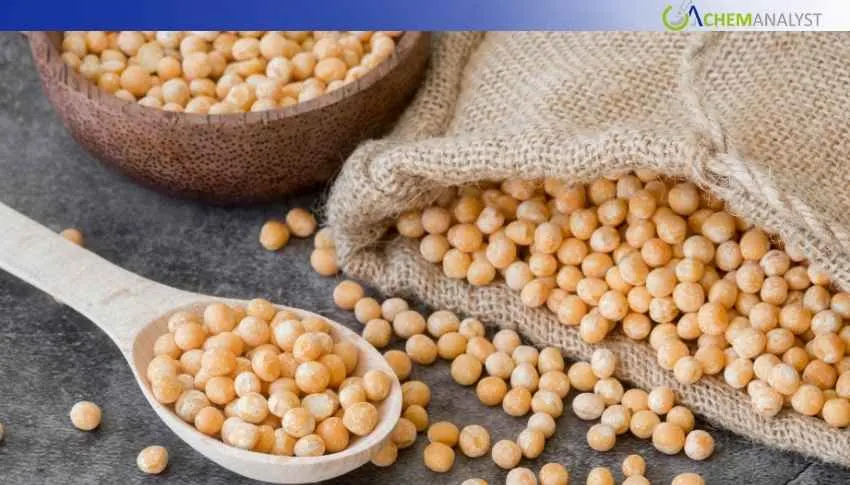Welcome To ChemAnalyst

Global Soy Protein Isolate prices are expected to decline moderately in August following a dramatic drop in July due to weak export demand and economic uncertainty. China's flexible pricing and huge inventories still direct global market trends. U.S.-China tariff expansion provides short-term support, while the subdued consumer sentiment in Europe dampens demand. September could be tranquil, but China's Golden Week in October could cause supply disruptions to propel prices upward.
Global prices for Soy Protein Isolate are expected to ease moderately in August, after last month's sharp correction. While the last month witnessed a sharp decline in the wake of muted export demand and economic tensions, the prevailing situation foresees a more gentle fall, motivated by trade trends and muted consumer confidence.
As the dominant exporter of Soy Protein Isolate, China continues to set the tone for global pricing. August likely to witness continued softening of prices, although less dramatic than the July decline. Exporters still have to bear the brunt of high inventory levels and risk-averse overseas buyers, especially in Europe and the United States. Although Chinese suppliers practice flexible pricing strategies to boost demand, global markets are expected to reflect this downward pressure.
One of the major propellers of Soy Protein Isolate trade flows stability is the extension of the temporary U.S.-China tariff deal. On August 11, U.S. President Donald Trump signed an executive order extending the deal by another 90 days, moving its expiration date to November 10, 2025. The action guarantees duty rates on the likes of Soy Protein Isolate not being altered, providing short-term importers and exporters with certainty.
The extension has definitely assuaged market concerns, particularly in the United States, where purchasers earlier had been frantically signing Soy Protein Isolate supplies ahead of the estimated tariff expiry. With the deal now signed up till early November, no significant disruptions should occur in September, while volumes of trade should remain normal.
In Europe, economic sentiment is under pressure as well. Germany, one of the region’s key Soy Protein Isolate consumers, is experiencing a deterioration in consumer confidence this August. This weakening outlook could translate into softer demand for Soy Protein Isolate-based products, particularly in the food and nutrition markets. Cautiousness among European importers likely thus add to the modest global price correction.
Although August price behavior is to stay contained, the Soy Protein Isolate market is still reactive to general economic and geopolitical events. The play between healthy trade conditions and tepid demand should be a window of relative tranquility, but suppliers are still under pressure to maintain inventories and be competitive.
In the near future, industry analysts anticipate no major price shocks in September, barring unexpected developments. The global Soy Protein Isolate market seems to head towards the phase of cautious stability with the players observing very closely for any sign of resuming or reviving volatility. However, this calm may be short-lived as seasonal factors begin to influence trade dynamics. One of the major happenings on the calendar is China's Golden Week holiday at the beginning of October—a week-long national holiday that usually derails manufacturing schedules, logistics operations, and export timetables.
Before the Golden Week slack period, overseas buyers prefer to pre-buy in late September in order to avoid disruption, potentially seasonally constricting supply and placing upward pressure on Soy Protein Isolate prices.
We use cookies to deliver the best possible experience on our website. To learn more, visit our Privacy Policy. By continuing to use this site or by closing this box, you consent to our use of cookies. More info.
